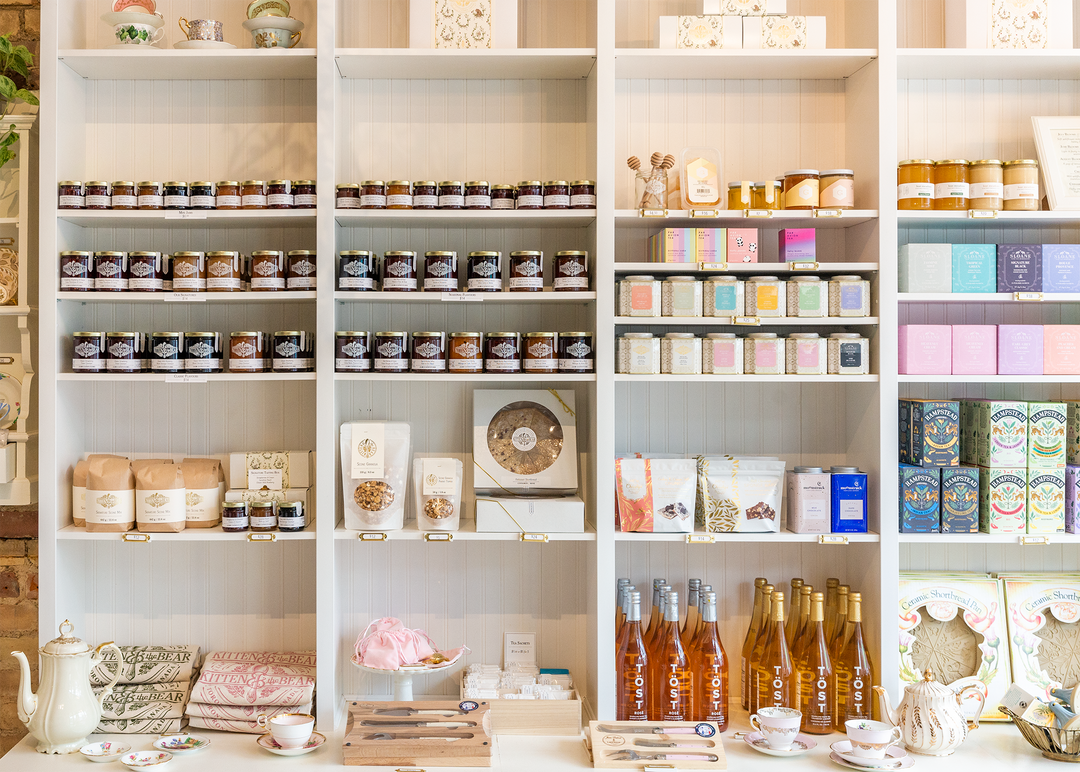all about ontario rhubarb

Each and every year, we’re astounded by the excitement that the rhubarb harvest brings for customers and culinary professionals alike. Rhubarb is the very first local “fruit” to appear at the market, and truly marks the beginning of the Ontario growing (and jam making!) season.
Technically a vegetable, the celery-like stalks of rhubarb are generally treated as a fruit, traditionally being used for baked goods such as pies, crumbles, and jam of course! In the early springtime it surfaces as several pink and green ombre stalks growing straight out of the ground, with large, fan-like leaves (which happen to be poisonous when eaten, so be wary!) Extremely bountiful and easy to grow in our northern climate, rhubarb is a beautiful and productive addition to any Canadian garden. To harvest your plant, simply yank on one stem as close to the soil as possible while holding the rest of your plant in place at its base. Voila- fresh rhubarb for all!
Raw and on its own, rhubarb is very tart and sour. Personally, I love it sliced thin and tossed into summer salads (similar to using green apple), or diced into hearty chunks and dipped in sugar. For jam making in particular, rhubarb lacks natural pectin content and falls apart quickly when heated, yielding a softly set, compote-like preserve. Blending with other summer berries however (strawberries being the classic pairing) lends a more vibrant colour, as well as additional pectin for a more fruit forward, complex texture.
If you are in Ontario, we exclusively use fresh rhubarb from Lennox Farm. They have a lovely farm stand that’s definitely worth a sunny Springtime visit if you have the chance!
Without further ado, here are my tips and tricks for rhubarb jam making at home:
- Always use the freshest stalks you can find- still firm rather than droopy!
- The pinker your rhubarb, the richer and redder your jam will be. More colourful rhubarb varieties grow as the season progresses, so I like to make my berry/rhubarb blends early in the season, and pure rhubarb preserves later for the richest, most appealing colour.
- Dice your rhubarb in large chunks to ensure you retain pieces of fruit in your final product, but not so long that you end up with an overly stringy preserve. My general guideline is cross sections the length of a standard teaspoon, so when you scoop out your jam, the rhubarb fibers fit nicely on your spoon. Also, there’s no need to cut your stalks lengthwise- save a bit of time and effort, as these will fall apart naturally. Your rhubarb jam will likely start off looking like a fruit salad, but don’t fret, it will turn into jam before your eyes, I promise!
- No matter what proportion you use, always mascerate your rhubarb in sugar and lemon juice overnight before cooking, especially if you are using our local tough outdoor grown varieties. This will ensure that your preserve will retain rhubarb’s quintessential stringiness, without being overly fibrous.
- Though strawberry rhubarb is a classic and tasty combination, don’t be shy to try other blends such as raspberry or cherry, or allow the delicate tartness of rhubarb to shine on its own in a pure fruit preserve!
- Rhubarb jams balance beautifully with a number of creative flavourings: some of my favourites include rose, vanilla, ginger, cardamom, cinnamon, citrus zest, and maple, or even savoury options such as bay leaf, smoke, or peppercorn (these make a delicious cheese board preserve or glaze for BBQ or roasted meats.)
- Most of all, have fun and jam on!










